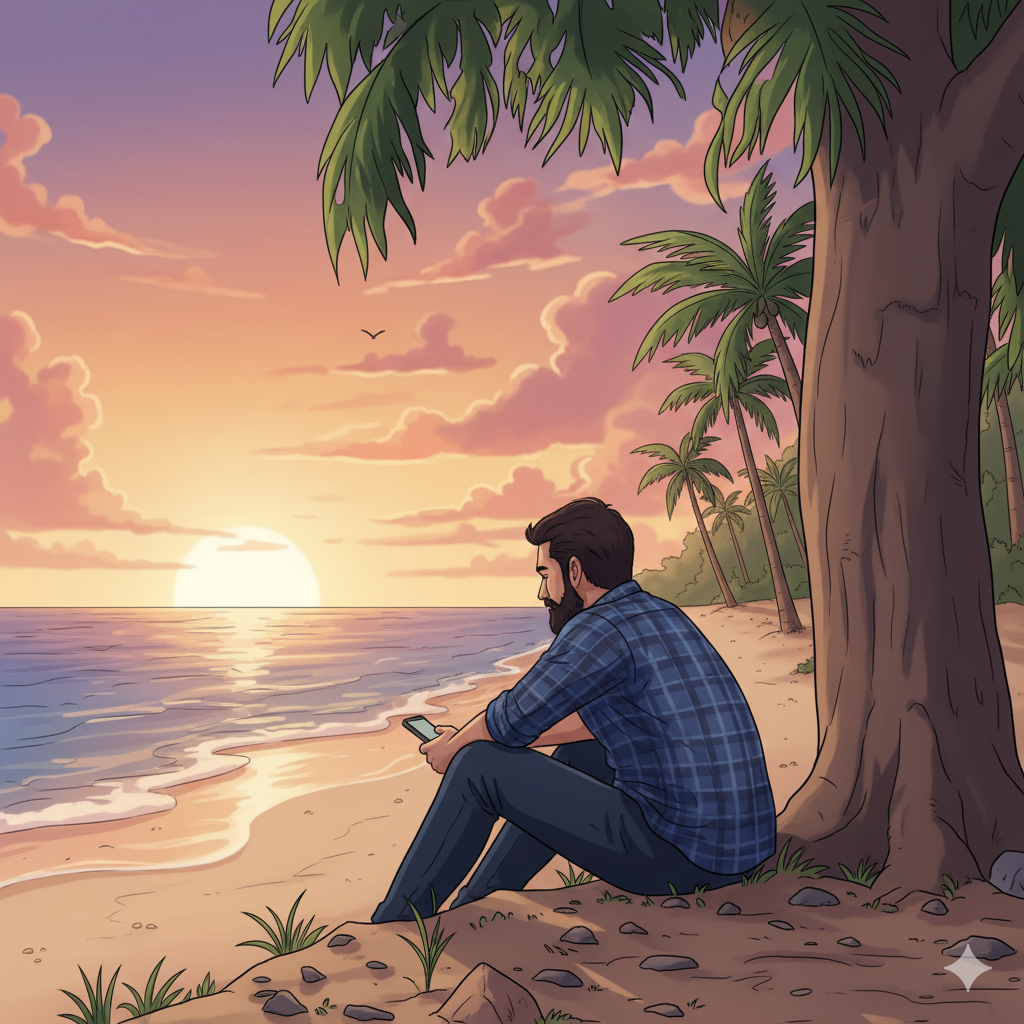Elias Finch, a man sculpted by disappointment and seasoned with regret, lived a life as beige as the peeling wallpaper in his cramped apartment. He worked a dead-end job at a rubber band factory, his days a monotonous cycle of stretching and snapping, a metaphor, he often thought, for his own dwindling elasticity. He ate bland meals, dreamt in grayscale, and his social interactions were limited to curt exchanges with the equally downtrodden cashier at the corner store. His existence was a study in quiet desperation, a symphony played on muted strings. He was, in his own estimation, a discarded draft, a crumpled sketch in the margins of life’s grand design.
Then, one damp Tuesday, while clearing out his deceased grandmother’s attic, Elias stumbled upon a dusty, rolled-up parchment tucked away in a chipped porcelain tea caddy. It wasn’t a family heirloom or a forgotten recipe, but something far stranger: a blueprint. Not for a house, not for a machine, but for a human being. And not just any human being – for Elias Finch himself. The title, penned in an elegant script he recognized as his grandmother’s, proclaimed it: ‘Blueprint for an Optimized Elias.’
The blueprint was a bewildering tapestry of intricate diagrams, cryptic annotations, and anatomical sketches. There were sections labeled ‘Emotional Calibration,’ ‘Cognitive Enhancement,’ and ‘Existential Recalibration.’ One particularly intriguing section, titled ‘Fear Annihilation Protocol,’ featured a complex schematic resembling a circuit board, interwoven with symbols he couldn’t decipher. Initially, Elias dismissed it as an eccentric project, a testament to his grandmother’s peculiar hobbies. But as he pored over the document, a flicker of curiosity, a spark long dormant within him, began to ignite. Could this be a guide, a roadmap to a better version of himself?
He started small, focusing on the ‘Social Fluency Matrix,’ a section that promised to transform him into a charismatic conversationalist. The prescribed exercises were unusual, bordering on the bizarre: practicing tongue twisters while juggling oranges, holding eye contact with strangers for extended periods, and reciting Shakespeare to pigeons in the park. To his surprise, these seemingly nonsensical activities began to yield results. He found himself engaging in effortless banter with colleagues, making genuine connections with people he’d previously only acknowledged with a grunt. His monotone existence began to take on a subtle hue of color.
Emboldened by his initial success, Elias delved deeper into the blueprint. He tackled ‘Cognitive Enhancement,’ devouring books on philosophy, learning to play the cello, and practicing memory techniques that allowed him to recall entire chapters verbatim. He felt his mind expanding, his perception sharpening, as if a thick fog were lifting from his consciousness. He started to see the world with new eyes, noticing the intricate patterns in a spider’s web, the subtle variations in the timbre of a bird’s song, the hidden beauty in the mundane. His gray world was now infused with vibrant colors.
The most challenging section proved to be ‘Fear Annihilation Protocol.’ It involved confronting his deepest fears, both real and imagined: public speaking, rejection, failure, and the ever-present fear of insignificance. The blueprint prescribed a series of ‘exposure therapy’ exercises that pushed him far beyond his comfort zone. He joined a local improv group, confessed his long-harbored feelings to a coworker (who, surprisingly, reciprocated), and even quit his soul-crushing job at the rubber band factory to pursue his lifelong dream of writing a novel.
Each conquered fear felt like shedding a layer of dead skin, revealing a stronger, more resilient self beneath. He began to understand that the blueprint wasn’t about transforming him into someone else; it was about uncovering the person he was always meant to be, the person buried beneath layers of self-doubt and fear. He was no longer a discarded draft, but a work in progress, a masterpiece in the making.
[INSERT_IMAGE_HERE_X]
The journey wasn’t without its setbacks. There were moments of doubt, relapses into old habits, and the nagging fear that he was deluding himself. But each time he faltered, he returned to the blueprint, finding solace and guidance in its cryptic wisdom. He realized that the blueprint wasn’t a magic formula, but a tool, a catalyst for self-discovery. It was a testament to his grandmother’s unwavering belief in his potential, a belief he was finally beginning to embrace himself. He began to see her not just as a quirky relative, but as a mentor, a guide who had left him a legacy far more valuable than any monetary inheritance.
As months turned into years, Elias became almost unrecognizable from the man he once was. He published his novel, which, to his astonishment, became a critical and commercial success. He found love, built meaningful relationships, and discovered a passion for life he never knew existed. He was no longer Elias Finch, the discarded draft, but Elias Finch, the author, the lover, the friend, the man who had dared to rewrite his own narrative. He still kept the blueprint, now faded and worn, tucked away in a safe place. It was a reminder of his journey, a symbol of the transformative power of self-belief, and a testament to the enduring love of a grandmother who had seen the potential in a man the world had overlooked.
He often visited his grandmother’s grave, placing a single red rose on the weathered headstone. He no longer felt the pang of regret that had once haunted him. He knew she was watching, not from above, but from within, a quiet whisper in his heart, a constant reminder that the greatest blueprint of all lies not on parchment, but within ourselves, waiting to be discovered, deciphered, and brought to life.
His life, once a monotone drone, had become a vibrant symphony, a testament to the power of self-discovery and the enduring human capacity for reinvention. He was no longer a discarded draft, but a finished masterpiece, finally framed and hanging on the wall of life’s grand gallery. He was, at long last, the optimized Elias, the man he was always meant to be, thanks to an old, discarded blueprint and the unwavering love of a grandmother who believed in him even when he didn’t believe in himself.






Leave a Reply